The Quest To Make The World's Most Perfect Chocolate Chip Cookies
People talk about finding the perfect chocolate chip cookie like they talk about finding true love. It’s a big freakin’ deal. And at times, it seems like it’s an utterly hopeless quest. When we first started on our journey to chocolate chip cookie greatness, we were optimistic. We thought, how hard could it be? There aren’t that many ingredients in chocolate chip cookies, we know how to bake, and dammit, we love them.
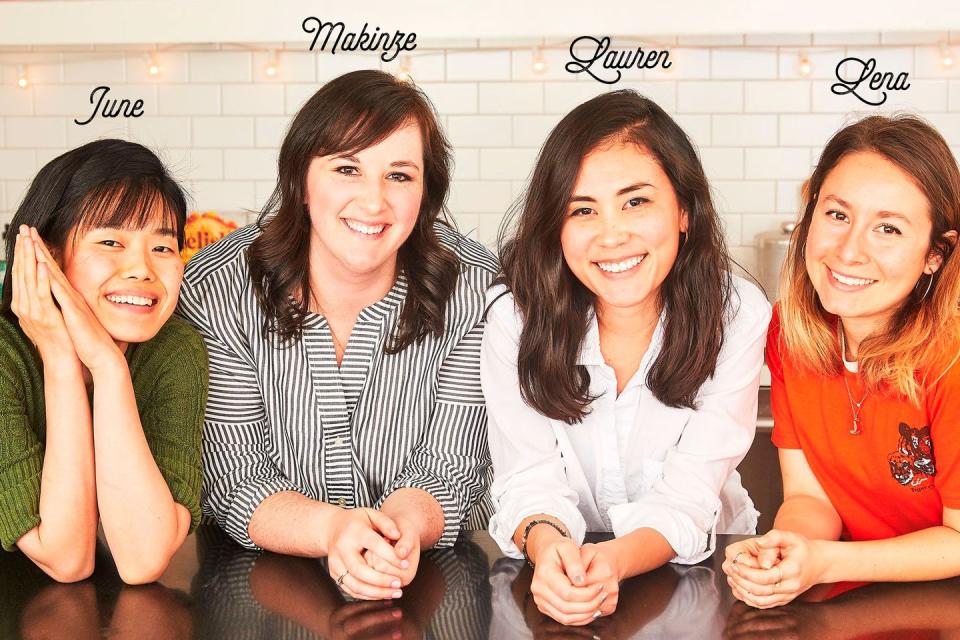
Here's the thing: We couldn't agree on what makes the perfect chocolate chip cookie. So instead of working as a team, we split up—and got unnecessarily competitive:
Lena wanted to create a cookie that's as salty as it is sweet. "I wanted it to be light, with salt permeating every last crumb." Jump to Lena's cookie journey.
June was on a mission to master a gluten-free cookie. "Patience is a virtue—and one that's especially important in gluten-free baking." Jump to June's cookie journey.
Makinze was looking to recreate her grandma's famous chewy cookies and kept her advice in mind: "You need three things: a good mixer, a good oven, and a family that thinks you make the best cookies in the world!" Jump to Makinze's cookie journey.
Lauren wanted to make the soft chocolate chip cookie that would end her years-long search for the perfect recipe. "Soft, fudgy cookies are my kryptonite!"Jump to Lauren's cookie journey.
You guys, the pressure of our (admittedly completely arbitrary) competition made us completely mad. “I’ve lost myself along the way. I don’t know what it’s supposed to be. Sometimes the things you want most will hurt you,” is a real scribbled note you can find in June’s notebook. But we forged ahead and created four unique chocolate chip cookies we each thought were the chocolate chip cookie. There was only one thing left to do: let our trusted Delish team decide whose was best.
WATCH WHO WON THE TASTE TEST:
We want to know what you think, too. Read each of our personal journeys, and vote for your favorite cookie: salty, gluten-free, chewy, or soft. And if we've inspired you to go on a cookie quest and come up with a recipe all your own, we've got some advice—because testing more than a thousand chocolate chip cookies will teach you a thing or two. We did a deep dive into how variables like oven temperature, butter, and sugar affect your finished cookie. (Spoiler alert: White sugar is the key to perfectly crispy cookies.) We broke down all the major dont's when baking chocolate chip cookies, too. Memorize them, and you'll never have a cookie fail again.
VOTING IS NOW CLOSED. AND THE WINNER IS: MAKINZE'S CHEWY COOKIE! READ ABOUT ALL FOUR COOKIES AND FIND THE RECIPES BELOW.

Lena's Cookie: The Salty One
by Lena Abraham I had one very simple goal in mind: I wanted to make a cookie that was the perfect combination of salty and sweet. I wanted it to be a light cookie—as far as desserts tend to go—that I could eat in the afternoon with coffee. I needed to integrate salt in a new and interesting way, though. Flaky sea salt is great on top of a cookie (and yes, I employed that tactic), but I wanted salt permeating every last crumb. I pondered different types of salt—pink Himalayan, smoked—but they seemed too high end. Then, it struck me: soy sauce. Stay with me. I liked the idea for two reasons. One, everyone has soy sauce in their pantry. Two, adding the salt in liquid form seemed like the best way to ensure that every bite had a taste of it. Through my many, many rounds of testing, I learned a lot about baking with this unique ingredient, perhaps most importantly this: Soy sauce is not nearly as salty as salt in its pure form. That’s why I used a whopping 3 tablespoons. Adding this much liquid to my dough meant I had to add more flour than I was planning to, and adjusting the flour, in turn, meant I needed to up the sugar, and somewhere around this time I got really sick of eating cookies. I know you probably can't comprehend this, but trust me—even Cookie Monster would have craved a salad if he’d eaten as many cookies as I had. I felt that I was on a good path with my *secret* ingredient, though, and continued to tweak my recipe around its flavor. Soy sauce is much more than just salty; it’s earthy and nutty, with notes of caramel and vanilla. To play this up, I added extra brown sugar and a double dose of vanilla to my recipe. All this makes for the best cookie dough I’ve ever tasted. The cookies are great, too—like, best-chocolate-chip-cookie-ever great—but the dough is insane. It’s got a whole butterscotch-toffee kind of flavor going on that’s just ridiculous. And I don’t even like cookie dough! Once I got my ratios right, the last thing was to choose the perfect temperature at which I'd bake the cookies. I landed on 375°—crispy on the outside, soft in the middle, and slightly chewy when cool.
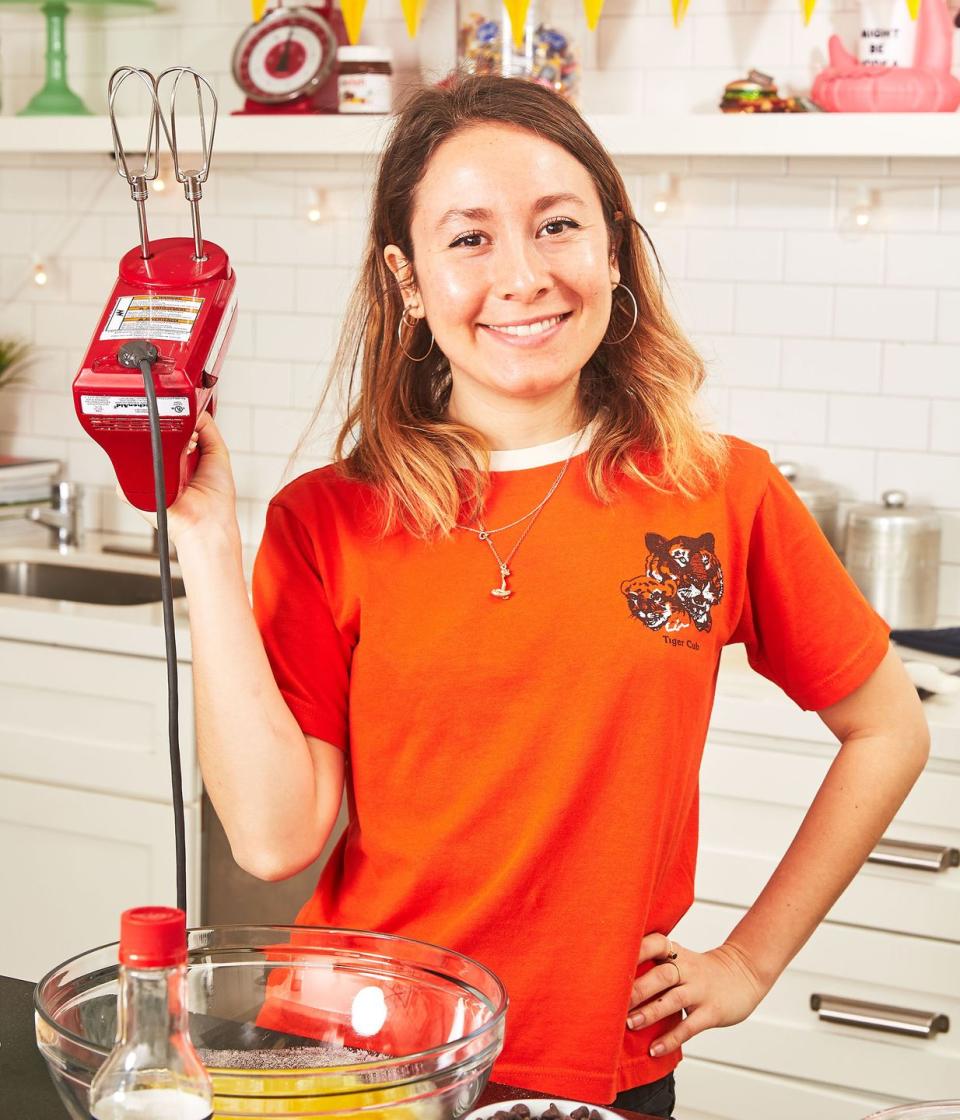
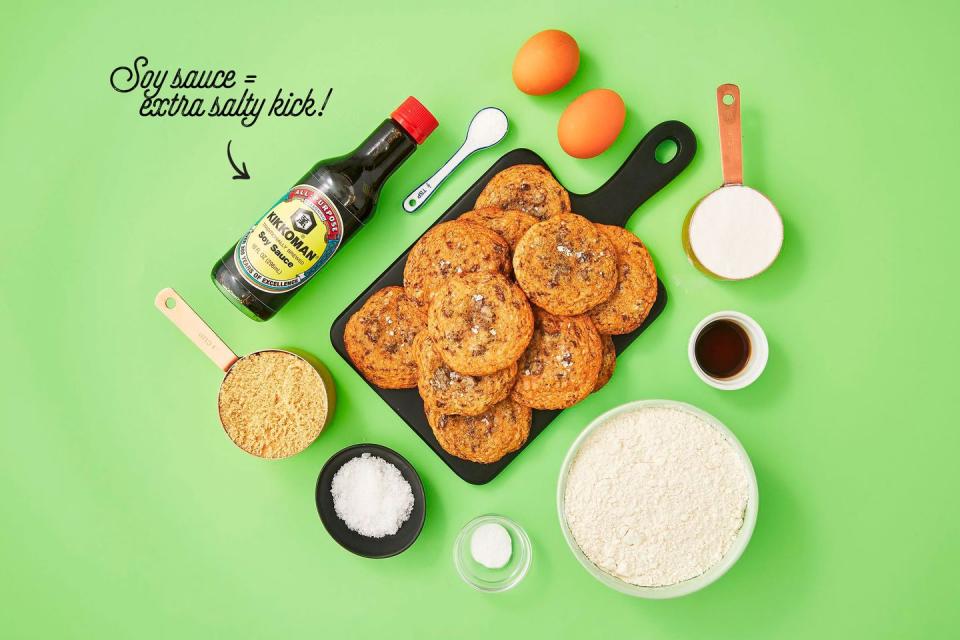


June's Cookie: The Gluten-Free One
by June Xie The chocolate chip cookie: It’s a classic, loved by all. But hand me a chocolate chip cookie only if you wish to witness me—a veritable monster—sacrilegiously nibble only the chocolatey bits before I trash the remaining crumbles in one fell swoop. They’re all just so...boring. Last year I developed an autoimmune condition that made some foods suddenly off limits for me—including anything with gluten. So, with my fellow gluten-free sufferers in mind, I decided to up the ante on this challenge: Can I make a good chocolate chip cookie that's also gluten-free? Over the course of a month, I went crazy testing, tasting, and dreaming about cookies. Waking life was a blur of sleep-deprived cycles of sugar crashes. I’d wake up at 3 a.m. with fragmented thoughts of crumbling cookies and a pervasive sense of doom and hopelessness. I had tasted the depths of cookie hell. But through all the tears, sleepless nights, and depressive weight gain, I learned a few things. A 2:1 ratio of brown sugar to granulated sugar plays a huge part in achieving the perfect amount of spread, good chew, soft center, and crunchy edges. Quality chopped chocolate gives you more control over the sweetness of your cookie and the higher cocoa butter content will lend a little more spreading power. A bit of chemical leavener in the form of baking soda is necessary—but too much will destroy that desirable chew. Use a scale, wash fewer dishes. Most importantly, I learned that patience is a virtue—and one that’s especially important in gluten-free baking. I landed on a happy mix of glutinous rice flour, almond flour, and buckwheat flour, which needed plenty of resting time in order to become a fully hydrated dough. I added floral lavender, bright citrus, and smokey coffee to balance out the earthiness of the gluten-free flours and a touch of milk powder to bind them all together in a gentle group hug. Resting the dough before baking married the flavors together and yielded a more unified taste. Resting the dough after baking helped, too: The cookies tasted even better the next day when left sealed in an air-tight container overnight. And even though I’ve made my ideal cookie—one that’s not too sweet, has fun flavors, is gluten-free, and is exciting enough for me to eat in its entirety—I still wake in the middle of the night panicking about the effects of butter temperature on final dough appearance. Perhaps one day I will be released from the devil’s grasp. In the meantime, please let me know if you have a spare Ambien. by Makinze Gore
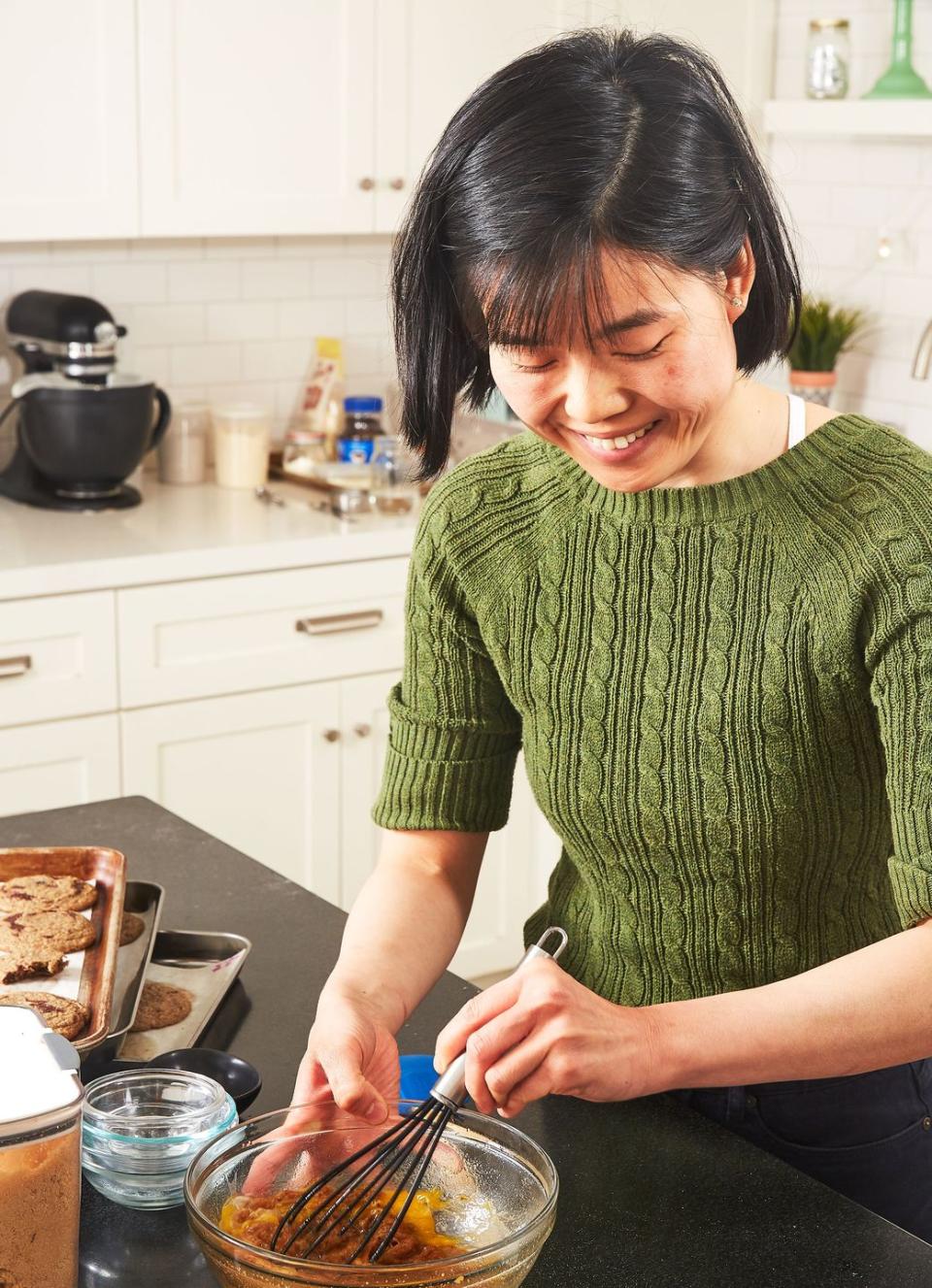
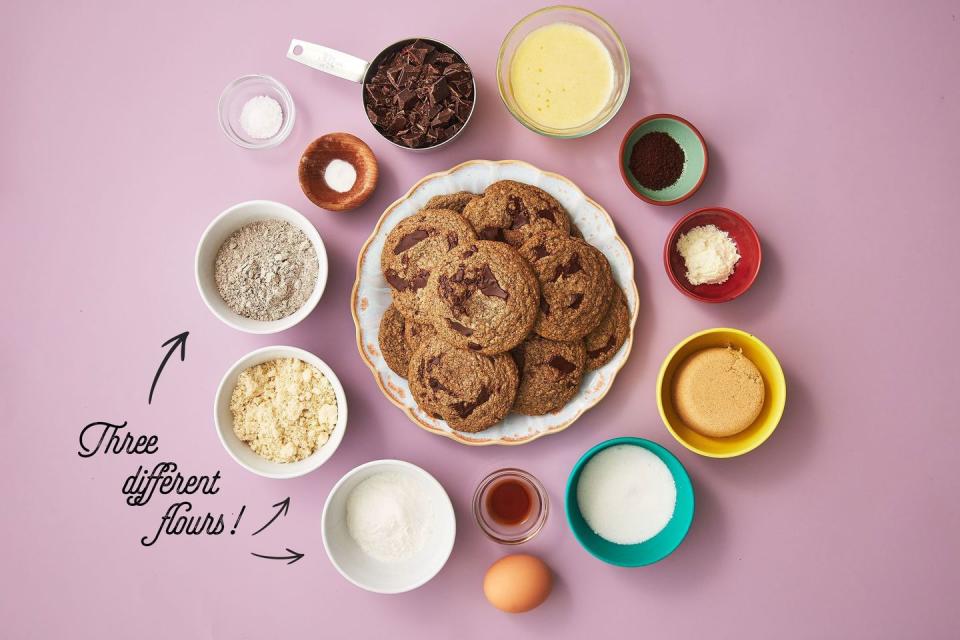


Makinze's Cookie: The Chewy One
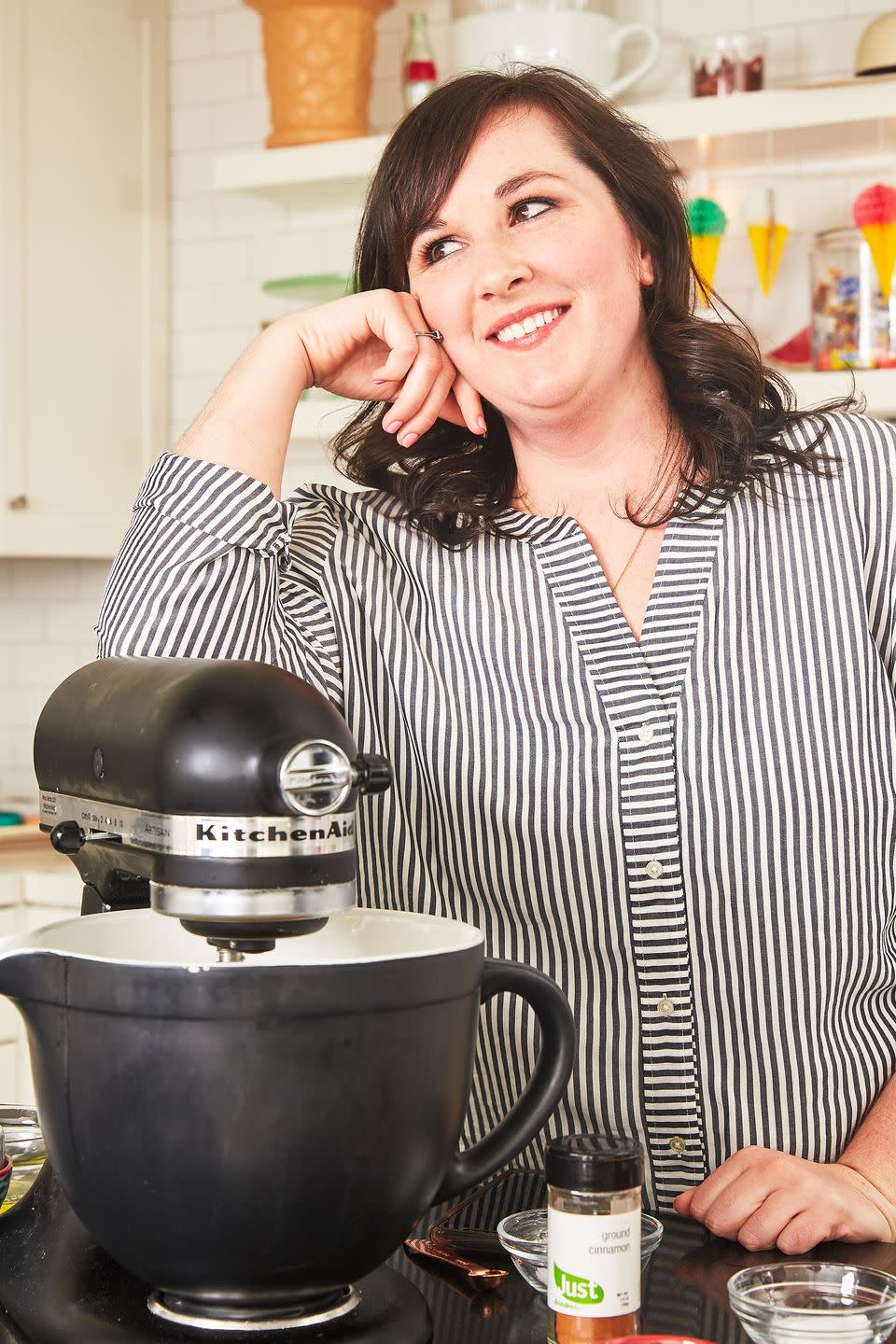
My obsession with chocolate chip cookies started when I was eight. I know everyone says it, but my grandma actually makes the best chocolate chip cookies. When I was around 10 or 12, I asked my grandma for her secret. She smiled really big and said, “Makinze, you need three things: a good mixer, a good oven, and a family that thinks you make the best cookies in the world.” When I set out to make my perfect cookie, I kept those three things—and my grandma’s cookies, of course—in mind. My ideal cookie is chewy on the inside, with just a bit of crisp on the edges. It needs to be large and have tons of chocolate; cookie dough is merely a way to hold all the chocolate together. I first tested my grandma's recipe with melted butter in an effort to make hers chewier, and honestly, I thought I almost had it after that very first version. I was stoked. I thought, “I've got this in the bag.” My confidence drove me to make too many changes on my next one, and my second version, well, let’s just say it was complete garbage. I was knocked off my high horse and forced back to square one. It took me seven versions to nail my perfect chocolate chip cookie. And by seven versions, I mean seven versions with four variations each. I baked each dough immediately after mixing at three temperatures: 325°, 350°, and 375°. I also chilled the dough for 30 minutes before baking at 350°. Are you counting? That’s a total of 28 rounds of cookies. That’s a long way from that first version I was so proud of. As I sat down to start my next version I did a deep dive into the ingredients. First up: the butter. When you brown butter, you’re letting it boil until the milk solids separate, letting most of the water out. Less moisture=chewier cookies. I wasn’t very interested in browning my butter though. It sounds too fussy. My compromise: I melted the butter down and let it boil for just one minute. This allows some moisture to evaporate but without the added pressure of taking it off the heat at the exact right moment before it burns. Now, eggs. It wasn't until my fifth version that I even considered playing with them. I have a note jotted down from that time period: Want to try with only one egg! My cookies weren’t spreading the way I wanted them to, and I was getting frustrated that each change I made was resulting in basically the same cookie. I thought the eggs might be adding too much air, too much lift. And then a friend suggested I try an additional yolk. Egg whites help baked goods rise, but yolks are fat. The yolk gives the cookie its fudgy texture and helps emulsify the sugars and butter, taking away all graininess that many melted butter cookies have. This was the game changer.


The ingredient that troubled me the most when I started this whole process was baking soda. I questioned its purpose in a chocolate chip cookie because it seems like baking powder belongs so much more. Baking soda needs to react with an acid to work, whereas baking powder already has an acid in it and only needs a liquid to react with. Chocolate chip cookies don't have very much acid in them, so why soda? My one and only version with baking powder told me why: Baking soda also helps a cookie spread and gives it color. My baking powder version sat like a puck and was incredibly pale.
Trying as it was, I had so much fun on this journey. I talked my friends’ ears off about cookies and forced them to try countless versions (honestly, they’re welcome). I researched and studied harder than I did in school and learned a lot along the way. Creating a perfect chocolate chip cookie is the most fun and delicious way to learn about the science behind baking. A few simple ingredients all work perfectly together to create the most iconic American dessert. But mine is the perfect version of the iconic cookie.

Lauren's Cookie: The Soft One
by Lauren Miyashiro For about 21 years, I only made one chocolate chip cookie recipe—the one on the back of the Nestlé Toll House bag. I still have it memorized, and I'm not ashamed to say that I still think it's great, but one day I woke up and knew that I deserved more, that a better homemade chocolate chip cookie definitely existed. So my journey began.
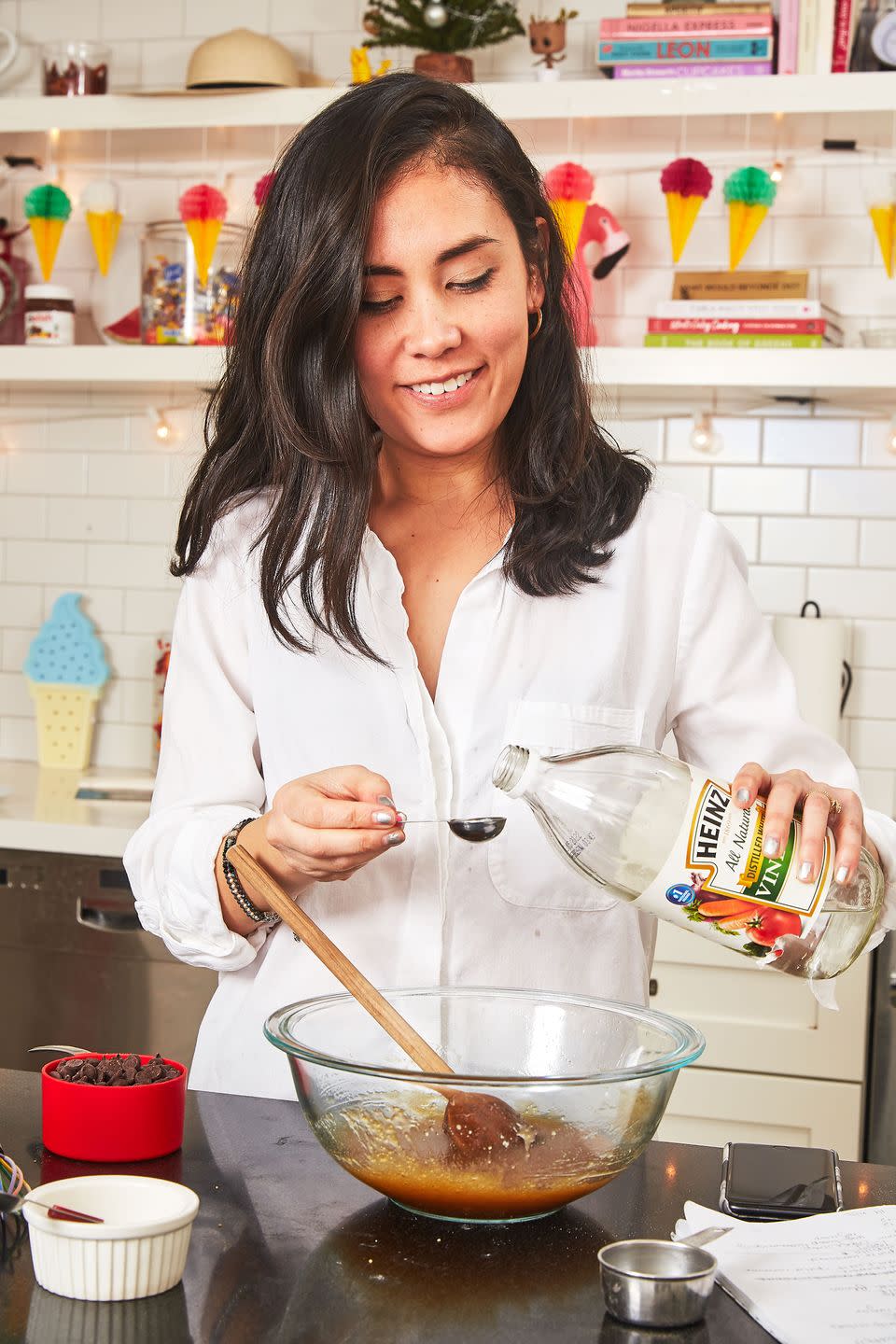
For the better part of the last decade, finding the best chocolate chip cookie cookie has become my life's mission. I've tried the fussy-as-hell New York Times bread flour and cake flour recipe, the viral pan bang (my husband's favorite), "The Cookie" (that's not even really a chocolate chip cookie), and about a million blogger recipes.
Through all these previous taste tests, I was never satisfied. But I understood this to be true: Chewy cookies are good, but soft, fudgy cookies are my kryptonite. So when I created this challenge for the team (yes, I'm the evil mastermind who tortured everyone), that's what I set out to create. And I learned some important things along the way:

Use unsalted melted butter. Browned butter is too caramely and intense—not classic enough. Salted butter doesn't make a huge difference.
You don't need granulated sugar. For a soft cookie, brown sugar is key. But you can balance the texture with a little crunchy contrast with turbinado sugar. The ratio is almost 2:1 (brown sugar:turbinado).
Vinegar is magical. For the perfect middle texture, you need a good amount of sugar. Vinegar offsets the sweetness without turning the cookie sour. As an acid, it also reacts with the baking soda for the perfect rise, so the middle is a bit fluffier (especially when warm), but not cakey.
Maldon is always a good idea. I love for each cookie to be loaded with chocolate. Flaky sea salt (Maldon is my go-to brand) strikes the perfect balance.
You don't need a mixer. A wooden spoon or spatula does the trick.
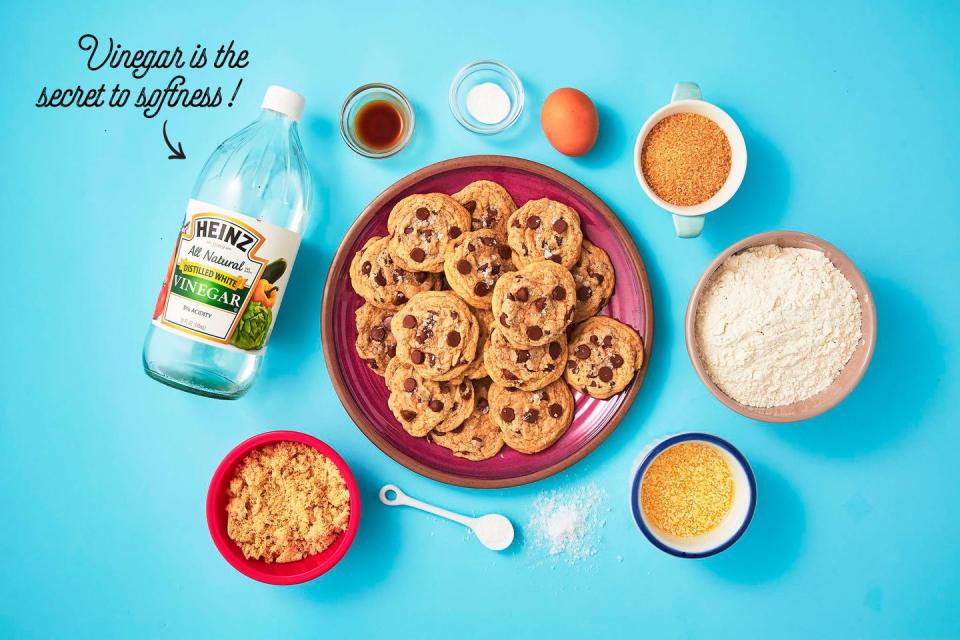
You Might Also Like

